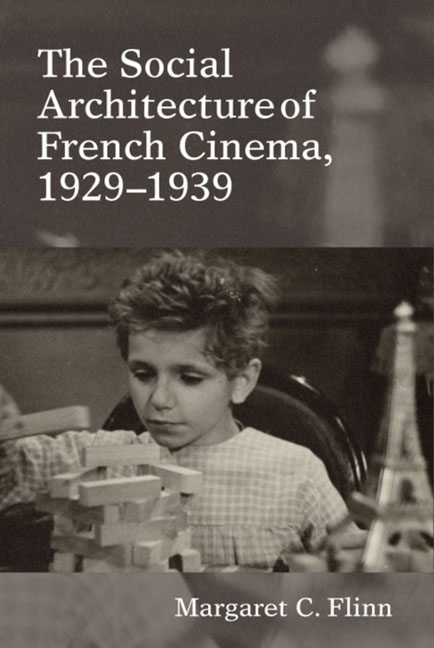Book contents
- Frontmatter
- Contents
- List of Illustrations
- Acknowledgements
- Introduction: An Architecture of Social Being
- 1 The Spatial Constitution of 1930s Documentary
- 2 René Clair's City Views: Realism and Studio Paris
- 3 Intertext and Political Margins in Jean Renoir's Boudu sauvé des eaux
- 4 Traversing Built History in Architectural Documentaries
- 5 Flâneuses and the Unmaking of Place
- 6 The Crowd as New Monumentality during the Popular Front
- Epilogue: Poetic Realism as Spatial Fable
- Notes
- Bibliography
- Filmography
- Index
Epilogue: Poetic Realism as Spatial Fable
- Frontmatter
- Contents
- List of Illustrations
- Acknowledgements
- Introduction: An Architecture of Social Being
- 1 The Spatial Constitution of 1930s Documentary
- 2 René Clair's City Views: Realism and Studio Paris
- 3 Intertext and Political Margins in Jean Renoir's Boudu sauvé des eaux
- 4 Traversing Built History in Architectural Documentaries
- 5 Flâneuses and the Unmaking of Place
- 6 The Crowd as New Monumentality during the Popular Front
- Epilogue: Poetic Realism as Spatial Fable
- Notes
- Bibliography
- Filmography
- Index
Summary
That the critical power of utopian space might come from its very non-existence is a paradox reminiscent of Jacques Rancière's film fables. In his eponymous collection of critical essays, Rancière shows how cinema draws on certain foundational myths, narratives, or values for a power that in fact presents itself in opposition to those foundational stories: “the art and thought of images have always been nourished by all that thwarts them” (Battista trans. 19). Throughout the course of this book, I have shown how both documentary and narrative films draw on certain spatial notions, often in paradoxical ways. By way of a conclusion, I would like now to consider a particular spatial paradox that characterizes the intersecting notions of documentary and realist filmmaking: the poetic realist preoccupation with atmosphere.
Documentary value and poetic realism
Writing about Chris Marker and Jean-Luc Godard, Rancière says that “documentary fiction invents new intrigues with historical documents and thus it touches hands with the film fable that joins and disjoins—in the relationship between story and character, shot and sequence—the powers of the visible of speech, and of movement” (Battista trans. 18). “Documentary fiction” for Rancière is a fiction particular to documentary film that draws upon historical documents. But if we look at cases of prominent poetic realist film, we find directors and critics drawing upon the notion of historical document being mobilized by the poetic realist film as well.
When Jean Renoir made La Bête humaine (1938), he approached the notion of document first by evoking the preparatory documentation of Zola and second by the physical guarantor of realism provided by the body of Jean Gabin as certified railway engineer. In an exemplary citation, we can see that for Renoir the connection to Zola is above all locational (literary scholars have mined Zola's dossiers préparatoires for their cartographic properties and we could thus consider such adaptations in light of the idea of spatial intertext developed in Chapters 3 and 4):
All these documentary elements, which were so important to Zola, will be very important in the film. Some may find it too important, but it seems to me that I would have betrayed the author if I had not, at every moment, recalled that our story plays out in the world of railroads and nowhere else.
- Type
- Chapter
- Information
- The Social Architecture of French Cinema1929–1939, pp. 170 - 179Publisher: Liverpool University PressPrint publication year: 2014



